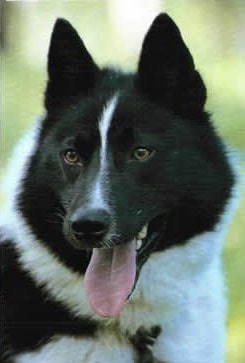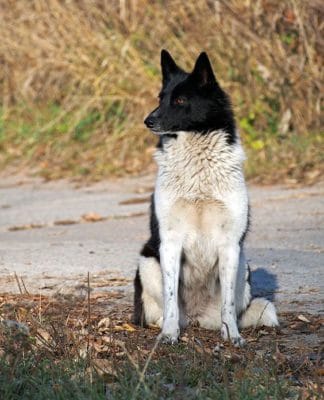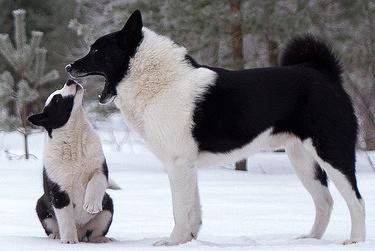Russo-European Laika

The Russo-European Laika is one of the most loyal breeds in the world. If a puppy has chosen its owner, it is for life. Strangers do not like fiercely protects members of his family. Will not let himself be petted by someone he does not trust. Can sneer and bark but will not sink his teeth into action without a direct threat. Patrols around the house and barks at any suspicious movement.
Table of Contents
Breed Information
| Another Name | Russko-Evropeĭskaya Laĭka |
| Origin | European part of Russia |
| Height | Males 52-55 cm Females 48-54 cm |
| Weight | 18-23 kg |
| Fur | Medium |
| Color | Black and White |
| Lifespan | 10-13 years |
| FCI Classification | Spitz and primitive types |
| Group | Hunting dogs |
| Price | From $50 |
Breed Photos
Origin History
The Russo-European Laika was bred in the USSR as a universal dog for hunting any animal. Hunters all over the world dream of having such a high-class assistant. To create the breed, cynologists used many kinds of dogs: from Arkhangelsk to Karelian huskies, Mari, and West Siberian representatives. The breeding was very cruel: only healthy, strong, and hardy individuals were saved. The modern Russo-European Laika is the best hunter in the world and an excellent companion for man. Relatively young breed, officially recognized by International Canine Federation in the late 1940s, is one of three Russian husky breeds along with West Siberian and East Siberian.
Appearance
The Russo-European Laika is considered one of the smallest among the three species of huskies in Russia. The body is proportional; the skeleton is strong, the belly is lean, the head is wedge-shaped, the nose is pointed, the eyes are oval, the ears are small, standing, strong and steady paws. The tail bent almost in two turns is the pride of Russo-European Laika. On average, they weigh from 18 to 23 kg. The coat is stiff and straight with black and white color.
Character
The Russo-European Laika is one of the most loyal breeds in the world. If a puppy has chosen its owner, it is for life. Strangers do not like fiercely protects members of his family. Will not let himself be petted by someone he does not trust. Can sneer and bark but will not sink his teeth into action without a direct threat. Patrols around the house and barks at any suspicious movement. It may be one reason for a quarrel with neighbors. Can get along with other dogs, but with difficulty. Agile, agile, brave, and strong – such qualities allow husky to come out the winner in any scuffle.
Care
Requires minimal care. Thick wool of Russo-European Laika molts in autumn and spring, combing every two days. Bath no more than twice a year. After each walk, check for mites. Always control the overall health and mood, watch for the dog’s teeth, claws, and ears. Not at all suitable for keeping in an apartment, the dog needs constant access to the street. Putting a Laika on a chain is blasphemy; it likes freedom and active interaction with people.
Training
Training of the Russo-European Laika should begin with basic commands; this way, obedience is developed. Training should be carried out from early childhood, and do not forget to continue training every day. Dog sports can be started with the husky to provide maximum physical activity, such as agility, obedience, or Frisbee. Russo-European Laika should understand who is the master in the house; it will nullify any caprice and disobedience. If you neglect the training, prepare for unreasonable barking, frequent running away from home, unbalanced and uncontrollable behavior.
Common Diseases
The Russo-European Laika is one of the healthiest dogs with almost no genetic diseases. If they do not die during hunting, they can live up to 13 years. Timely vaccination will save the husky from infections, which it can catch from wild animals while hunting. Many diseases occur due to improper nutrition and housing, such as obesity, bronchitis, allergies, and joint dysplasia. Urinary tract stones may form. Suffer from epilepsy and loss of voice.
Nutrition
The Russo-European Laika can eat both purchased food and home-cooked meals. The diet must contain lean meat without bones, raw, boiled, or scalded with boiling water, necessarily in small pieces. Fish can be alternated with meat, cottage cheese, kefir, by-products, porridge, vegetables, and fruits. Do not forget about the mineral and vitamin complexes. For nutrition, you can consult with breeders. You should not give your dog poultry and fatty meat, sweets, smoked meats, salty, fatty, floury, and fried foods.
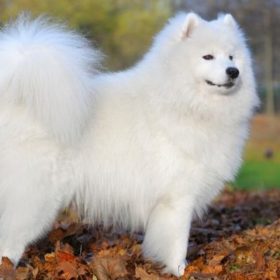 Samoyed
Samoyed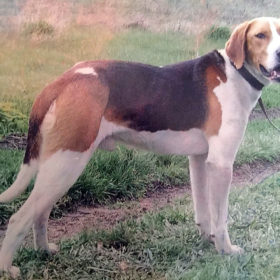 Russian Harlequin Hound
Russian Harlequin Hound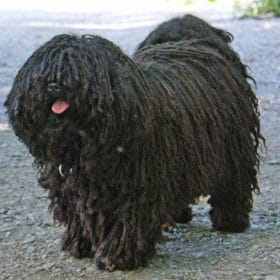 Puli
Puli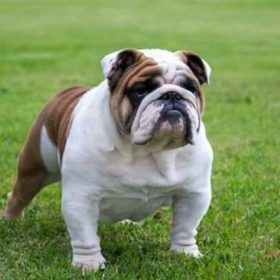 Bulldog
Bulldog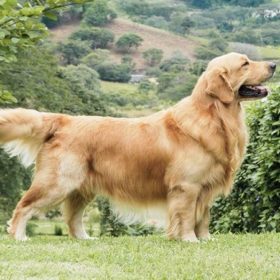 Golden Retriever
Golden Retriever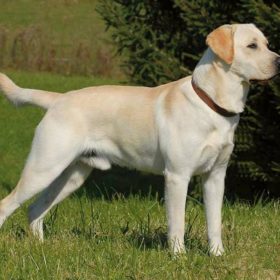 Labrador Retriever
Labrador Retriever